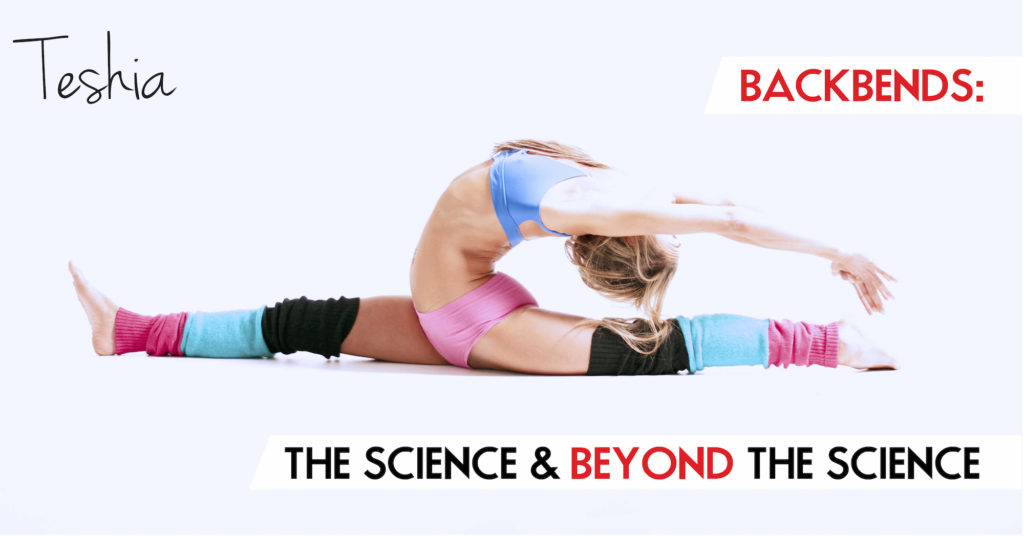
For many yoga practitioners, whether it be for physical or metaphysical reasons, backbends are the most difficult part of their practice. They resist them, even hate them, but yet on some level (perhaps an intuitive one)… know they need to “go there.”
The Science Behind The Backbend
Before I get into the physiology of the backbend, let me ask you this: When your wrist is stiff, and you feel a slight cramp, what do you do? Think about it now. Do you hold your arms up, wiggle your wrist, and then make sure you are bending each wrist forward and backwards?
We are naturally inclined to bend our joints forward and backward to relieve tension, but for some reason, we FORGET that our spines work exactly the same way. We are designed to move forward and backward, but we spend the vast majority of our time in a forward hunch — when we type, look at our phones, or even when we sit and read a book. When our backs feel stiff, we may arch our back for a few seconds, but this is not enough. In my opinion, for the health of your spine, you have to DEcompress the front part of the discs and soft tissue between your vertebrae, and compress the back half, at least once a day.
“Cracking” Your Back
The idea that cracking your back is enough to alleviate back pain is a myth. To understand the scientific explanation of why backbends are phenomenal, you need to understand what is NOT happening. First of all, you are not cracking anything: the sound is not caused by your vertebrae actually knocking together! You are actually popping bubbles. Your joints and vertebrae are swimming in a lubricating liquid called synovial fluid, and this fluid contains oxygen, nitrogen and carbon dioxide. When you rapidly compress your joints (such as your knuckles), you are forming bubbles in this fluid which then pop, making that satisfying cracking sound.
The relief you feel from cracking your back actually has nothing at all to do with this sound: you feel relief because you have relieved tension in your discs, compressing the soft tissue at the back of your spine or the back of your knuckles, and flooding the area with warm, healing blood and fluid.
Beyond The Science
As we all know, science only goes so far to explain what is happening in our bodies. When we meditate, or when we stretch, we feel a rush of hormones that makes us happy. But just how these hormones effect us and why we feel the way we feel, often goes beyond the explanation of science.
The truth–the lived, actual truth–of backbends is that when you are new to them, they can make you feel scared, anxious and fearful. The next truth about backbends, is that when you get used to them, and your back gets stronger and more flexible, you feel elated, charged and ecstatic after a good backbend.
Why does this happen? If you subscribe to the concept of energy meridians and chakras, the clearest explanation is that your heart chakra opens as you expand your chest, and this gives you a happy feeling as energy surges up and into your brain, making you smile from pure joy!
If you opt not to include that which lies beyond the physical into your understanding of your physicality, exploring the backbend will at the very least deliver a happy and energized feeling.
It may very well even change your life for the better.
People often ask me, “How did you get so flexible?” For me, the answer is simple, Yoga (and specifically backbends) saved my life. In the process, the flexibility just came.
You can read more about my journey into Yoga by clicking here.
Backbend daily. You WILL feel the change!
PS: Yeesssss, that IS me in the photo! Well, I DID say I was flexy, did I not? 😉
